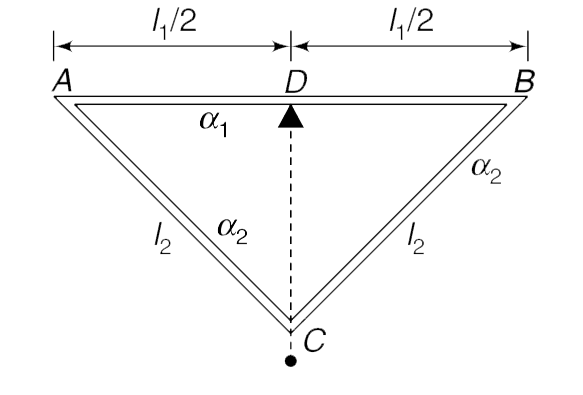Complete Solutions to All Questions of chapter TEMPERATURE AND THERMAL EXPANSION of Class 11 book with complete answers and questions
| Class 11 | PHYSICS |
| Chapter | TEMPERATURE AND THERMAL EXPANSION |
| ARIHANT MASTER PROBLEM | All Questions |
| Number Of Questions | 7 |
| Academic Year | 2023-24 |
The focal length of a spherical mirror is given by` f=R/2` , where R is radius of curvature of the mirror. For a given spherical mirror made of steel the focal length is f = 24.0 cm. Find its new focal length if temperature increases by `50^(@)C`. Given = `alpha_("Steel")=1.2 xx 10^(- 5).^(@)C^(-1)`
View SolutionHeight of mercury in a barometer is `h_0 = 76. 0` cm at a temperature of `theta_1 = 20^(@)C`. If the actual atmospheric pressure does not change, but the temperature of the air, and hence the temperature of the mercury and the tube rises to `theta_(2)= 35^(@)C`, what will be the height of mercury column in the barometer now? Coefficient of volume expansion of mercury and coefficient of linear expansion of glass are
`gamma_(Hg) =1.8xx10^(-4).^(@)C^(-1), alpha_(g)=0.09xx10^(-4).^(@)C^(-1)`
View SolutionIn the last problem if the scale for reading the height of mercury column is marked on the glass tube of the barometer, what reading will it show when temperature rises to `theta_(2)=35^(@)C` ?
View SolutionTwo rods of different metals having the same area of cross section A are placed between the two massive walls as shown is Fig. The first rod has a length `l_1`, coefficient of linear expansion `alpha_1` and Young's modulus `Y_1`. The correcsponding quantities for second rod are `l_2,alpha_2` and `Y_2`. The temperature of both the rods is now raised by `t^@C`.
i. Find the force with which the rods act on each other (at higher temperature) in terms of given quantities.
ii. Also find the length of the rods at higher temperature.

View SolutionTwo rods of equal cross-sections, one of copper and the other of steel are joined to from a composite rod of length `2.0m` at `20^(@)C` the length of the copper rod is `0.5m`. When the temperature is raised to `120^(@)C`, the length of composite rod increases to `2.002m`. If the composite rod is fixed between two rigid walls and thus not allowed to expand, it is found that the length of the component rod also do not change with increase in temperature. Calculate the Young's modulus of steel. Given Young's modulus of copper `= 1.3xx10^(11) N//m^(2)` the coefficient of linear expansion of copper `alpha_(C) = 1.6xx10^(-5)//.^(@)c`
View SolutionAssume that the coefficient of linear expansion of the material of a rod remains constant, equal to `alpha^(@)C^(-1)` for a fairly large range of temperature. Length of the rod is `L_0` at temperature `theta_(0)`. (a) Find the length of the rod at a high temperature `theta`. (b) Approximate the answer obtained in (a) to show that the length of the rod for small changes in temperature is given by `L = L_0 [1 + alpha (delta- delta_(0))]`
View SolutionIn a compensated pendulum a triangular frame ABC is made using two different metals. AB of length `l_(1)` is made using a metal having coefficient of linear expansion `alpha_(1)`. BC and AC of length `l_(2)` each have coefficient of linear expansion `alpha_(2)`. A heavy bob is attached at C. Pendulum can oscillate about the pivot D. Find `(l_(2))/(l_(1))` so that distance of bob from the pivot point D does not change with change in temperature.

View Solution
All Questions questions and complete solutions for chapter TEMPERATURE AND THERMAL EXPANSION of ARIHANT PHYSICS (HINGLISH) of Class 11